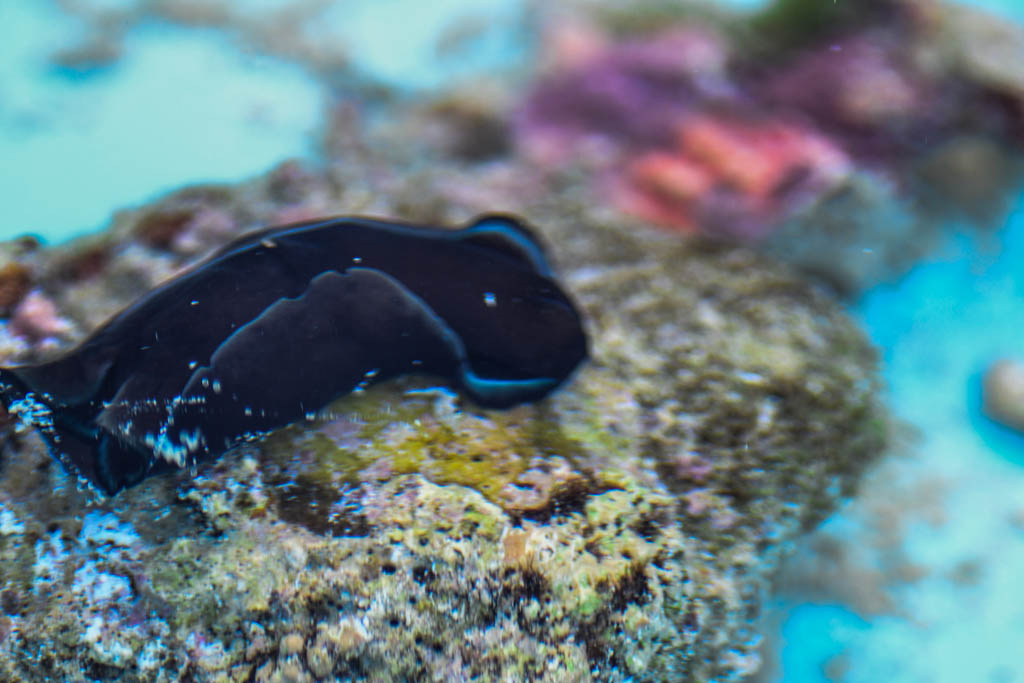Physical Description
All opistobranch molluscs from the family Aglajidae are characterised by having a narrow, elongate body with a triangular headshield that narrows posteriorly (Rudman 1978). Their shell is internal and quite heavily calcified, they also have a large flattened body whorl in which the upper edge is extended into a triangular process; other whorls are small and bulloid in appearance (Rudman 1978).
Anthes and Michels (2007) looked at 6 species of P. gardineri and found that the average body weight was 1197.1 mg ±1246.4SD and the average body length was 26.3mm ±15.5SD. For egg-laying individuals, body weight was 2271.9 mg ±1618.4SD (Anthes & Michiels 2007). This suggests that body size and body length varies within normal individuals and compared to those individuals that are egg-laying. P.gardineri represents the atypical group of the genus Philinopsis as they have a long, muscular, tubular buccal bulb for which it is suspected they use to catch their prey. This tube makes them relatively easy to identify as folds of the tube form a rounded, central crest on the anterior. 
The colour of P.gardineri is black with a blue trim on the outer edges of the parapodium and posterior shield and tail lobes. P. gardineri resembles Philinopsis pilsbryi in its morphology but P. pilsbryi has distinctive a cream body with distinctive black markings arranged in circles. |